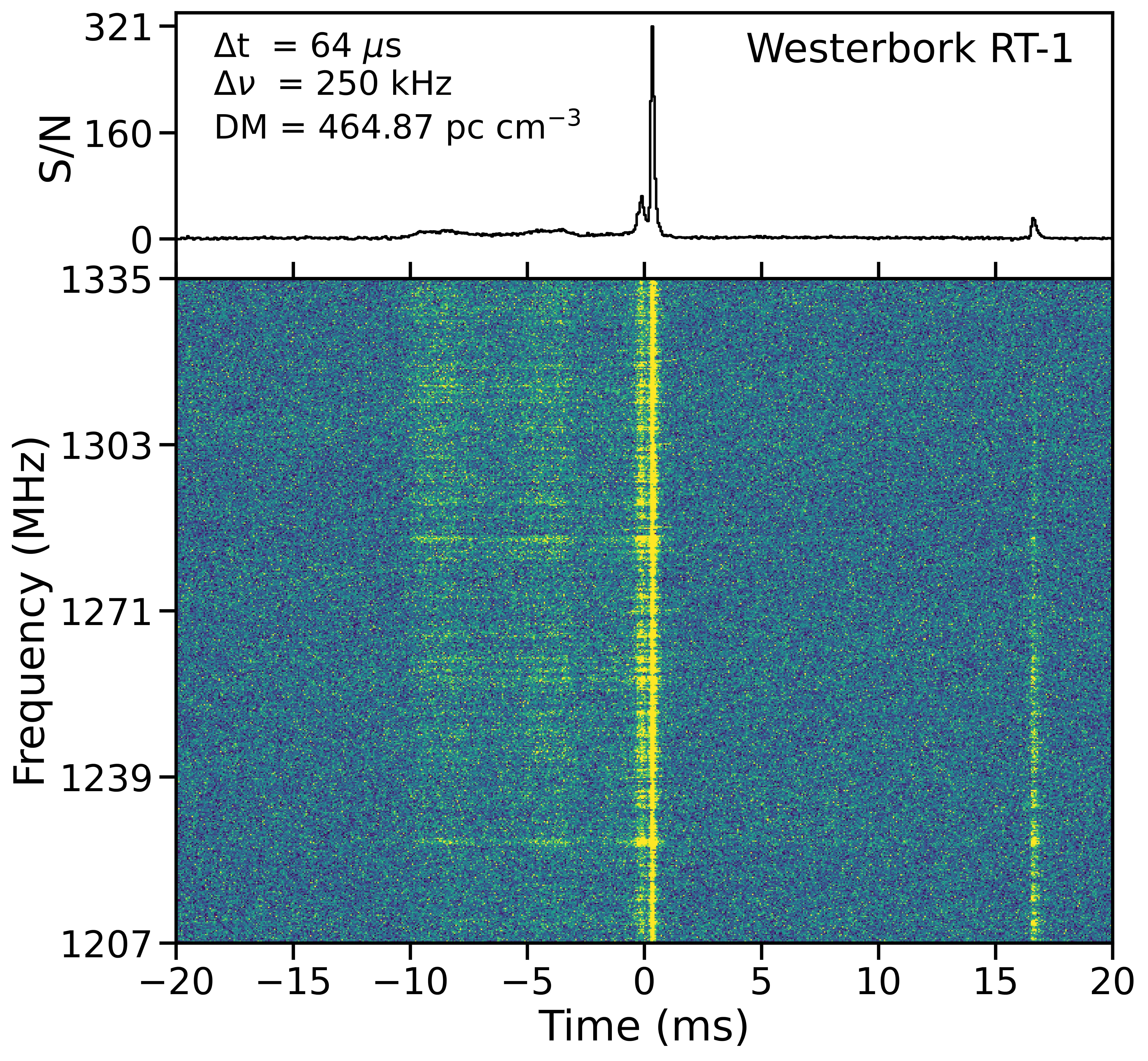 July 23, 2024
July 23, 2024
We report on the detection of a bright burst originating from the MeerKAT-discovered, repeating FRB 20240619D (ATel #16690) using the Westerbork RT-1 25-m telescope at a central frequency of 1.27 GHz (L-band) and with 128-MHz bandwidth.
The preliminary properties of the burst are:
Arrival time (MJD, TDB): 60511.994415889
Fluence: 690 +/- 138 Jy ms
Dispersion measure (DM): 464.87 +/- 0.11 pc cm-3
Due to the high signal-to-noise ratio and the presence of sharp features (< 200 microsec) in the burst we are able to accurately and precisely determine the DM by making use of the structure-optimizing code DM-phase (Seymour 2019). We note that the burst is broadened due to dispersive smearing within the channels. The residual smearing within a frequency channel ranges from ~101 microsec at the top to ~137 microsec at the bottom of the observing band. The voltage data of the burst was saved, which will allow us to study the burst at higher time resolution with coherent dedispersion.
Our reported DM is ~15 units lower compared to the DMs (486.8, 480.7 and 471.9 pc cm-3) of the bursts reported by the MeerTRAP team (ATel #16690). These three previous DM values were determined by maximizing the relatively low signal-to-noise ratio of unstructured bursts, and may therefore overestimate the dispersion measure.
The arrival time is referenced to infinite frequency at the Solar System barycentre (in TDB), and assuming a DM constant of 1/(2.41 x 10-4) MHz2 pc-1 cm-3 s. We measure the fluence of the burst by averaging over the entire observing bandwidth and applying the radiometer equation using a system equivalent flux density (SEFD) of 420 Jy. The error on the fluence is roughly 20% and arises from the uncertainty on the SEFD of the telescope.
As a result of the low elevation of the source, we are only able to observe for ~3 hours per day. Up until the burst detection we observed for 26 hours at L-band and 22 hours at P-band (0.33 GHz). Our detection thresholds for 8-sigma events correspond to a fluence of ~10 Jy ms for L-band and ~80 Jy ms for P-band. Thus far we have not detected a burst at P-band. The detection of a bright burst after limited exposure hours (and with relatively low sensitivity) could indicate that the source is highly active. We therefore encourage follow-up observations at all wavelengths.
Ould-Boukattine et al. 2024, The Astronomer's Telegram, No. 16732.
